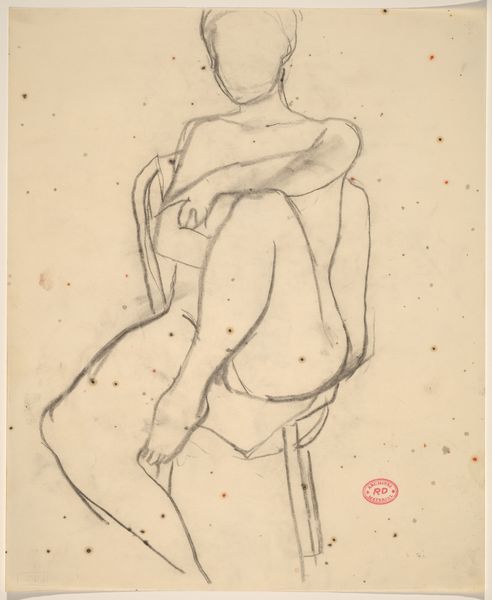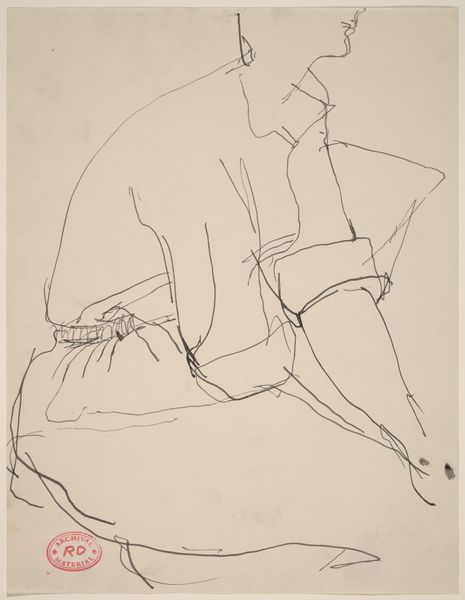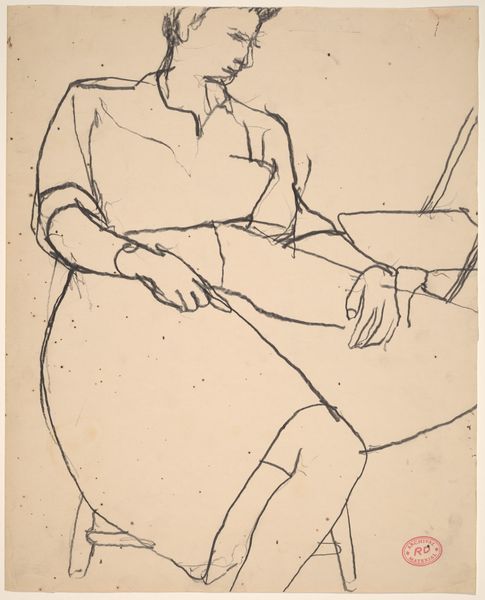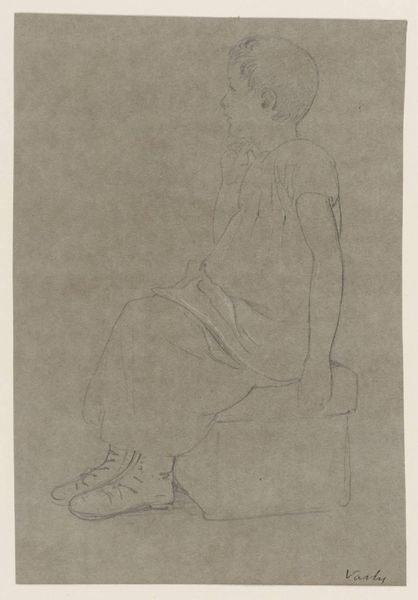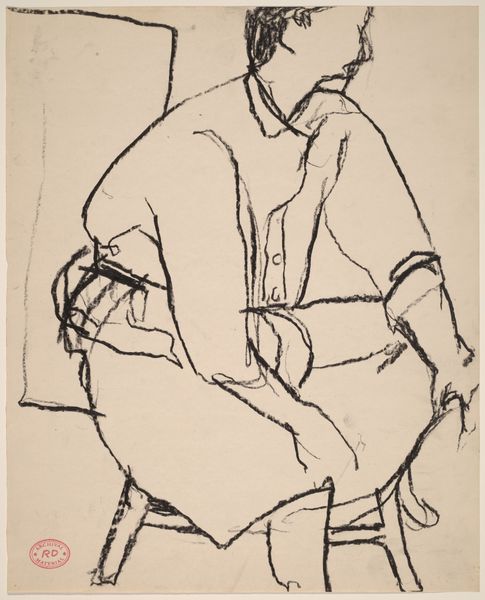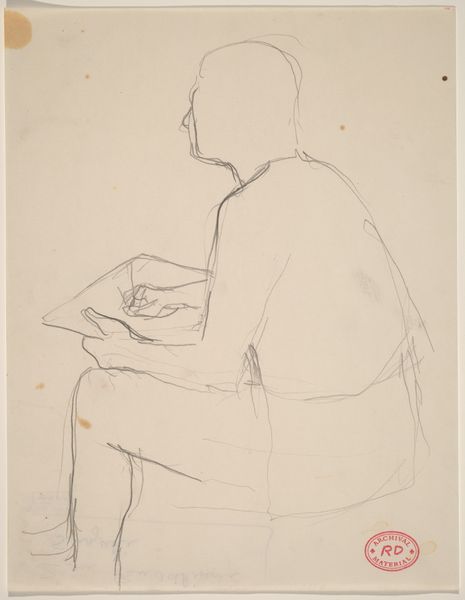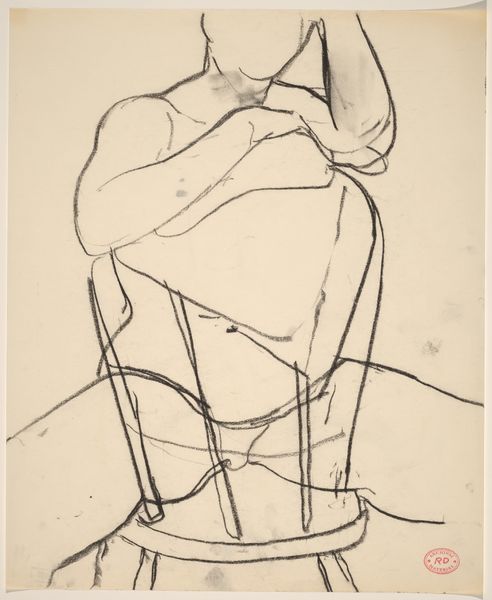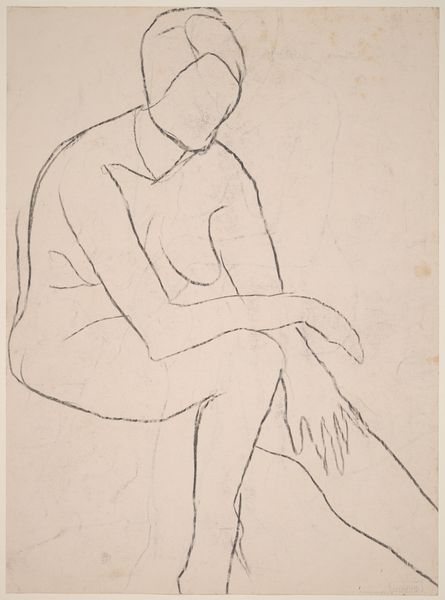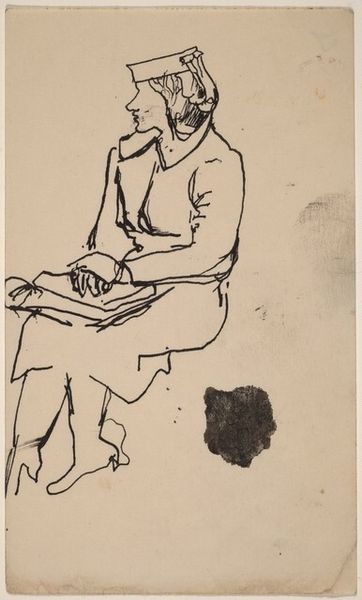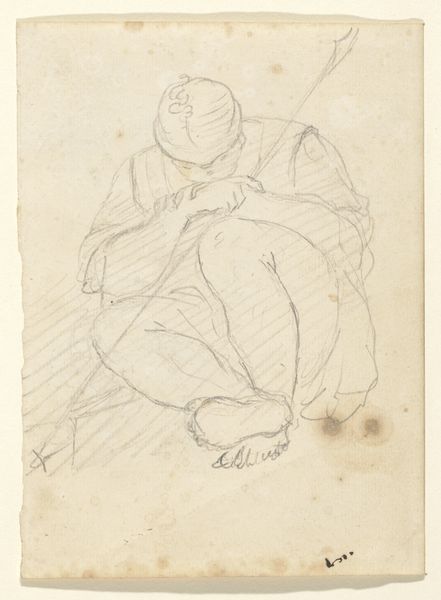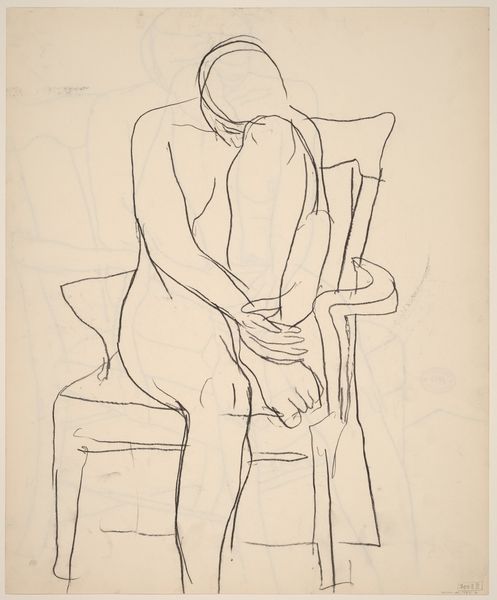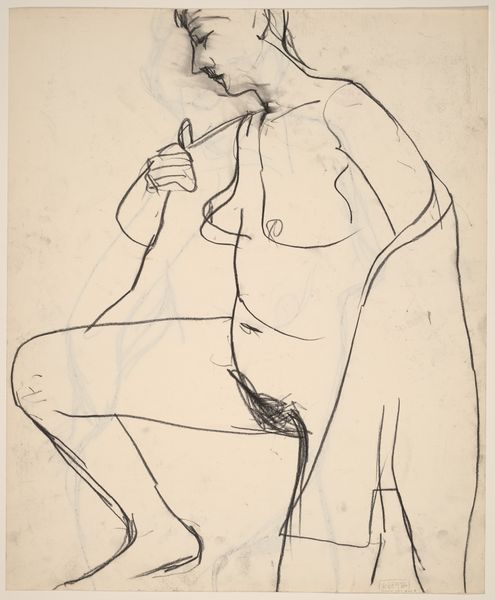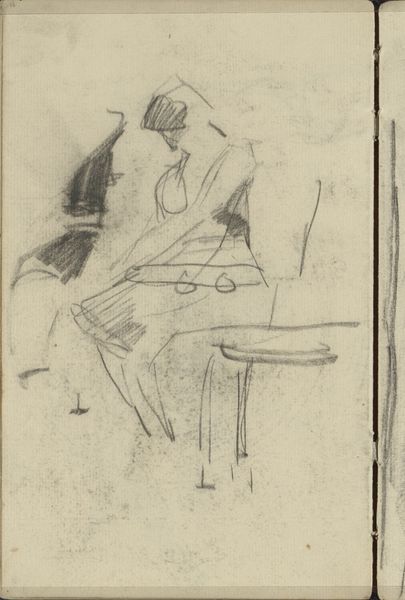![Untitled [two studies: seated man and feet] by Richard Diebenkorn](/_next/image?url=https%3A%2F%2Fd2w8kbdekdi1gv.cloudfront.net%2FeyJidWNrZXQiOiAiYXJ0ZXJhLWltYWdlcy1idWNrZXQiLCAia2V5IjogImFydHdvcmtzLzYzNDE5ZjgyLWIxMjctNGU3Yy1hNDgxLTk0NzFlM2FmYjY4Yi82MzQxOWY4Mi1iMTI3LTRlN2MtYTQ4MS05NDcxZTNhZmI2OGJfZnVsbC5qcGciLCAiZWRpdHMiOiB7InJlc2l6ZSI6IHsid2lkdGgiOiAxOTIwLCAiaGVpZ2h0IjogMTkyMCwgImZpdCI6ICJpbnNpZGUifX19&w=3840&q=75)
drawing, pencil
#
portrait
#
drawing
#
figuration
#
bay-area-figurative-movement
#
pencil
Dimensions: overall: 45.4 x 30.2 cm (17 7/8 x 11 7/8 in.)
Copyright: National Gallery of Art: CC0 1.0
Editor: Here we have Richard Diebenkorn's "Untitled [two studies: seated man and feet]", a pencil drawing done sometime between 1955 and 1967. The composition is interesting – a seated figure rather nonchalantly posed, and then just... the feet. It feels almost humorous. What do you see in this piece? Curator: Well, from a historical perspective, Diebenkorn’s shift towards figuration during this period is fascinating. Up until this time, he was known mostly for abstraction. We have to remember that figuration during the mid-century, after the rise of Abstract Expressionism, was already a political act. The art world favored non-representation; recognizable imagery was suspect, maybe even viewed as conservative. Editor: So, by depicting the human form, was Diebenkorn going against the grain? Curator: Precisely. And it wasn't just the act of depicting, but *how* he depicted. Note the gestural lines, the unfinished quality, the spatial ambiguity. He’s not interested in academic realism, is he? Editor: No, definitely not! The way he deconstructs the figure almost feels abstract, even though it's clearly a person. Curator: Exactly! He’s navigating the complex relationship between abstract and representational art, reflecting broader cultural shifts and challenges to the established art institutions and market. Did he manage to walk this line? Editor: Absolutely! Seeing it that way gives me a fresh perspective. I see this wasn't just a quick sketch; it’s a quiet statement about the changing landscape of the art world.
Comments
No comments
Be the first to comment and join the conversation on the ultimate creative platform.
